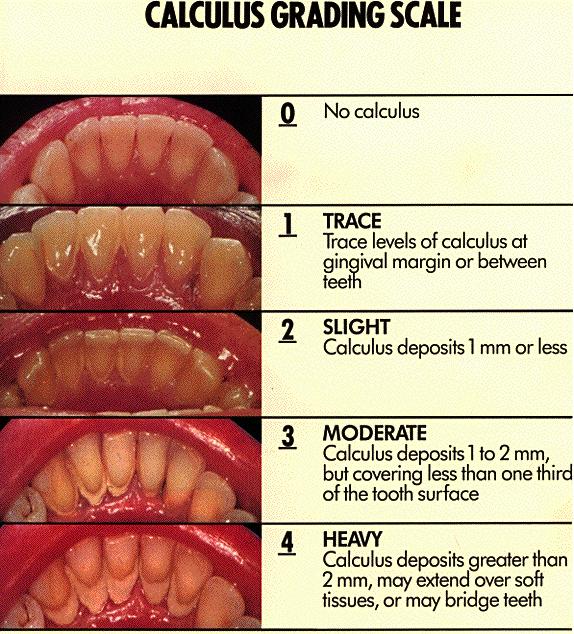Understanding Dental Calculus Grading: Assessing Oral Health

Calculus formation in your oral health can be likened to dental plaque undergoing mineralization, and it’s a process with some interesting characteristics:
- Calcification Timing: The mineralization process, known as calcification, typically begins within a mere 4-8 hours after plaque formation.
- Speed of Mineralization: Around 50% of the plaque becomes mineralized within just 2 days, while 60-90% of it may be calcified after 12 days.
- Removal Challenges: Unlike plaque, which you can effectively manage through daily at-home brushing, calculus cannot be removed as easily. Professional intervention by a dentist or dental hygienist is necessary for calculus removal.
- Protective Role: Interestingly, once calculus forms, it can act as a barrier, inhibiting bacterial action (an advantage), but paradoxically, it can also serve as a stagnant area for new plaque accumulation (offering some protection to plaque).
- Inorganic Material Accumulation: Early-stage plaque contains minimal inorganic material, but as it matures into calculus, this inorganic content increases.
- Not All Plaque Calcifies: It’s worth noting that not all plaque undergoes calcification; it tends to reach a plateau of maximal mineralization after approximately 2 days.
- Microorganisms’ Role: The involvement of microorganisms is not always essential in the formation of calculus.
- Concentration of Minerals: Plaque has the remarkable ability to concentrate calcium at levels 2-20 times higher than those found in saliva.
- pH Impact: Research suggests that the pH (acidity) of the oral environment may play a more critical role than calcium in plaque mineralization.
- Individual Variations: The composition of early plaque from individuals who are prone to calculus formation differs, typically containing more calcium (3 times more), less phosphate, and lower levels of potassium compared to those who do not readily form calculus.
Leave a Reply